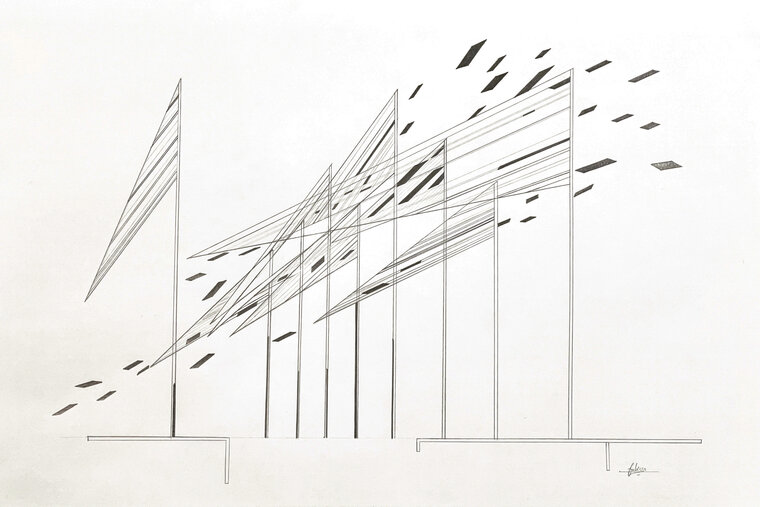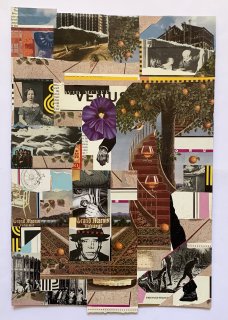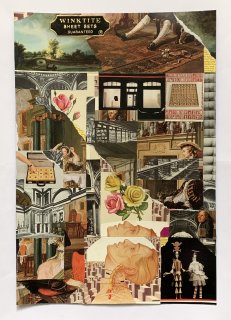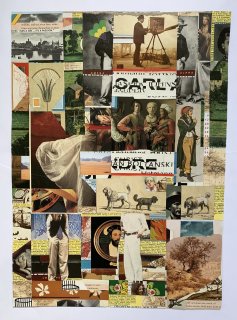
The drawing shows the power of the invisible. The patterns in nature which is like the wind. You can only see them through other mediums. If you cannot see things this doesn’t mean they do not exist.
My art practice involves “veil language”. It conveys a particular set of ideas or stories implicitly. With increasing censorship and suppression of ideas sometimes creatives find it difficult to express themselves. My practice focuses on the abstraction of Islamic geometric patterns, which allows me to delve into themes of spirituality, cultural identity, and the impact of trauma. Being a part of the Ahmadiyya Muslim community by birth. I am influenced by our history of persecution and the events that have collectively shaped our identity.
Through my practice of drawing and the involvement of paper, I seek to establish a meaningful conversation between traditional Islamic art forms, contemporary artistic practices, and global politics. Which serves to underline the significance and beauty of Islamic geometric patterns within a global context. My creative process is personal, helping me to visualise my own experiences and emotions.
However, it is a difficult situation in Pakistan for Ahmadi who call themselves Muslims. They were declared non-Muslims on 7th Sep 1974 through an amendment in the constitution. In 1984, the government of Pakistan under General Zia Ul Haq issued an anti-Ahmadiyya Ordinance XX, which prohibited any Ahmadi from preaching their belief, identifying themselves as Muslims or using Islamic practices. Attempting to justify the act of declaring Ahmadi non-Muslim, the Government of Pakistan issued a “White paper” under the title “Qadiyaniyyat- Islam Kay Liya Sangin Khatrah” (Qadiyaniyyat- A grave threat to Islam. Which helps me to address the authority of paper. Showing its dichotomy of both conflict and resolution.
As an Artist who is part of an Ahmadiyya Muslim community. It is a crime to address any idea which represents the community in Pakistan. As an Artist who is part of an Ahmadiyya Muslim community. It is a crime to address any idea which represents the community in Pakistan. Ahmadi Muslims believe in the Messiah, Mirza Ghulam Ahmed peace be upon him (1835-1908) of Qadian. It is a revival movement in Islam, emphasising essential Islamic teachings of peace, love, justice, and sanctity with members of the community in over 200 nations.
Inspired by “Nasreen Mohamedi” (1937-1990). Through her language of abstract and minimalism. My process of manipulating Islamic geometric patterns found a new vocabulary. She made significant contributions to the world of modern contemporary art by bridging the West. Her practice addresses different issues like colonialism, decolonisation, partition, and trauma in the broader context of identity.
In the midst of escalating conflicts surrounding Islamic ideologies across Europe and the ever-evolving geopolitical landscape of Islam and Pakistan, we find ourselves in an era of influence and historical significance. It is imperative that we acknowledge this pivotal moment, marked by a resurgence of Islamic thought and identity. Against the backdrop of modernisation in culture and the arts, coupled with the complexities of migration, it becomes all the more crucial to bring to light and confront the pressing issues that have emerged during these transformative times.







